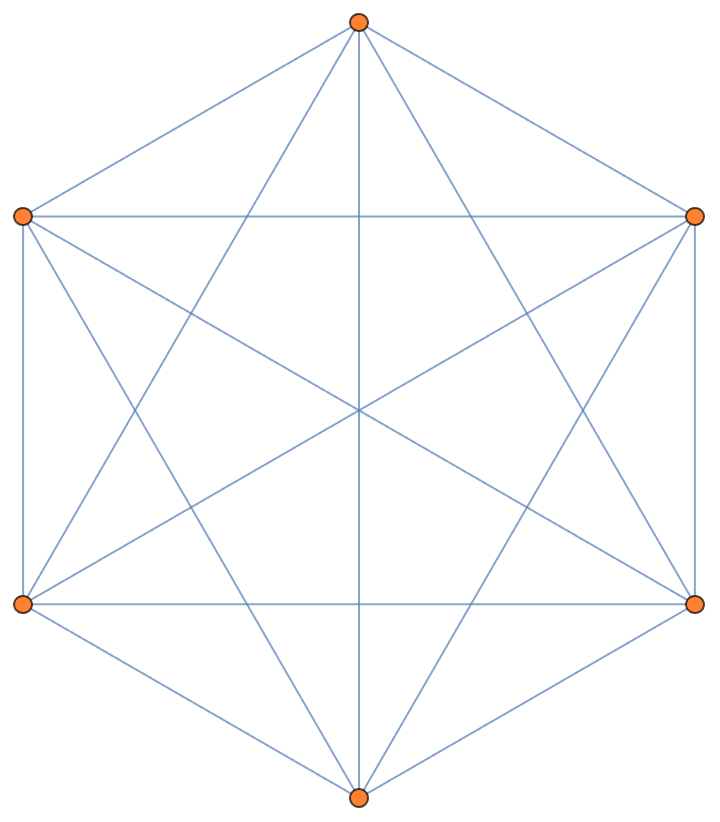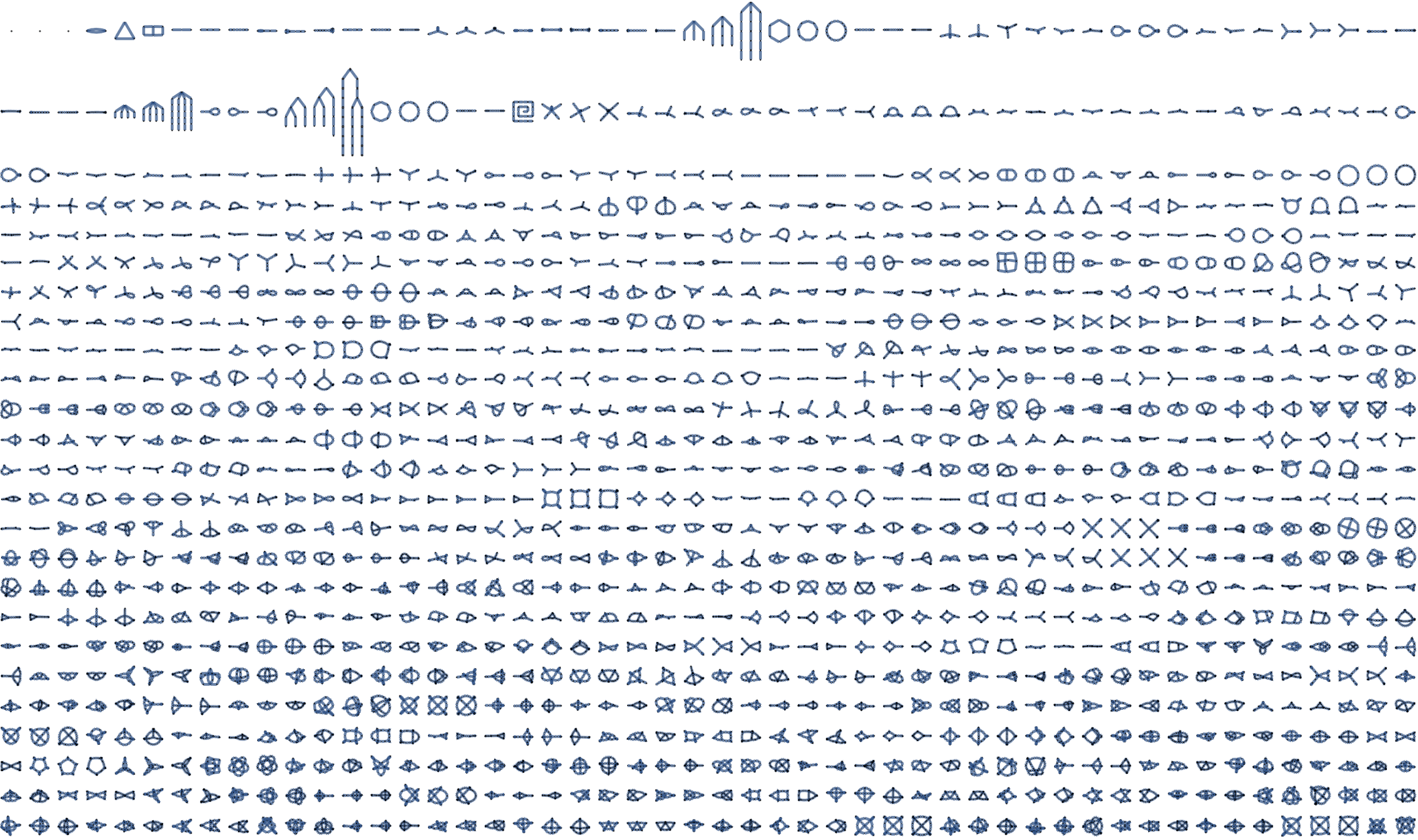@Theodore Mollano I see your article exploring the graph tilings, and the constrained network systems. It almost makes me want to use Graph3D, to separate different evolution paths in 3D space.
Graph[GraphUnion @@ generateSimpleTemplate[{3}, 6],
VertexStyle -> RandomColor[RGBColor[1, 0.51, 0.2]],
EdgeStyle -> RGBColor[0.331, 0.4884, 0.7223]]
With @James Boyd this is easy. There's an old Ruliad proverb that whenever you're working with big graphs, when you're dancing with the Ruliad you should bitmap.

Because graph tilings have important relations to Combinatorics, Graph Theory, and Computer science, and this article was Space & Time.
With[{graphstwo =
Select[DeleteDuplicates[
Graph[VertexList@#, #,
VertexStyle -> {RandomColor[], EdgeForm[Black],
AbsolutePointSize[15]},
EdgeStyle -> {RandomColor[], AbsoluteThickness[2.5]}] & /@
Subsets[EdgeList[
GraphUnion[CompleteGraph[5],
Graph[{1 \[UndirectedEdge] 1, 2 \[UndirectedEdge] 2,
3 \[UndirectedEdge] 3, 4 \[UndirectedEdge] 4,
5 \[UndirectedEdge] 5}]]]], IsomorphicGraphQ],
ConnectedGraphQ]},
Grid[Partition[graphstwo, 50], Frame -> None,
ItemSize -> {1.5, 1.5}]]
Offer us a glimpse into statistical and algorithmic connections, and we have got the template tiling.

These are illustrative examples of the k-valent tilings.
Grid[Partition[
Flatten[Map[Map[NeighborhoodGraph[#, 1, 1] &, #] &,
Map[{doubleEdge[#], tripleEdge[#], tripleEdge[doubleEdge[#]]} &,
graphstwo], {2}]], 50], Frame -> None, ItemSize -> {1.5, 1.5}]
And the @Stephen Wolfram future problem determines the largest graph that can be formed using a simple set of templates.

This is such a good framework for project culmination.